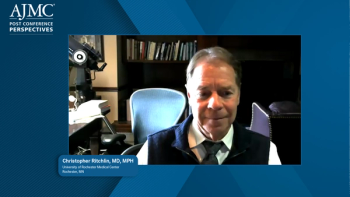
Much-Improved Outcomes for Follicular Lymphoma Transformed to DLBCL in the Rituximab Era, Study Finds
Although histological transformation to diffuse large B-cell lymphoma (DLBCL) remains a common complication of follicular lymphoma, patient survival has increased significantly since the introduction of rituximab about 2 decades ago.
Since the anti-CD20 monoclonal antibody rituximab (Rituxan; Genentech) was introduced about 20 years ago to treat
Before rituximab, the outcome of patients with transformed FL included a median posttransformation survival (PTS) of 0.6 to 1.7 years, and now it is about 56 months, the authors stated.
The results,
Transformed FL, or t-DLBCL, is DLBCL’s most common form.
The authors also compared survival rates among those patients with t-DLBCL and primary DLBCL (p-DLBCL) in the 2000-2020 period, a rarely reported comparison. Whereas transformation of FL to t-DLBCL was “usually associated with a dismal outcome” in the prerituximab era, they stated, now t-DLBCL and p-DLBCL outcomes can often be considered equivalent.
Utilizing the Surveillance, Epidemiology, and End Results (SEER) database, the authors identified patients with primary FL and those with p-DLBCL between 2000 and 2020. Those subsequently diagnosed with DLBCL at least 2 months after FL diagnosis were identified as having t-DLBCL.
Ultimately, the investigators identified 50,332 patients with FL and 95,933 with p-DLBCL. With a median follow-up of about 10 years, 1631 patients (3.3%) were found to have developed t-DLBCL. “To our knowledge, this [is] the largest dataset of patients with t-DLBCL published to date,” they said.
The median time from FL diagnosis to t-DLBCL was about 4 years, the authors noted.
About half (49.6%) of patients were alive 5 years after FL transformed to DLBCL. “Older age, advanced stage, and early transformation were associated with worse PTS,” explained the authors.
Although the outcomes of patients with t-DLBCL before the rituximab era were significantly worse, HT remains “critical…in the natural history of FL,” they wrote. In the 2000-2020 data, HT’s occurrence significantly decreased patients’ OS (P < .001). The overall 10-year survival rate and median overall survival of patients with vs without HT was 56.6% and 137 months vs 64.8% and 194 months, respectively.
Patients with t-DLBCL who received either chemotherapy alone or in combination with radiation therapy (RT) as initial therapy—prior to HT—tended to have shorter PTS than those who had RT alone or were treated with a “watch-and-wait” (WW) approach. Conversely, compared with those who had WW or RT, those treated with chemotherapy alone or in combination with RT as initial therapy at HT had relatively longer PTS.
When examining the combined survival of 2 patient cohorts with DLBCL—those who had p-DLBCL or t-DLBCL—it was found comparable among those with p-DLBCL and those who had t-DLBCL and received RT or WW as initial therapy prior to HT.
“The initial treatment strategy for t-FL should be tailored and individualized,” concluded the authors. Autologous stem cell transplantation (ASCT) was widely recommended prior to the rituximab era, but the results of their analysis suggest avoiding ASCT in patients with t-DLBCL who received RT or WW prior to HT, and it should be strongly considered for those with t-DLBCL who received chemotherapy or combined modalities before HT.
References
1. Zheng W, Liu M, Guan L, Wang S. Outcomes of the transformation of follicular lymphoma to diffuse large B-cell lymphoma in the rituximab era: a population-based study. Cancer Med. 2024;13(8):e7120. doi:10.1002/cam4.7120
2. Federico M, Caballero Barrigón MD, Marcheselli L, et al; Aristotle Consortium. Rituximab and the risk of transformation of follicular lymphoma: a retrospective pooled analysis. Lancet Haematol. 2018;5(8):e359-e367. doi:10.1016/S2352-3026(18)30090-5
Newsletter
Stay ahead of policy, cost, and value—subscribe to AJMC for expert insights at the intersection of clinical care and health economics.








































